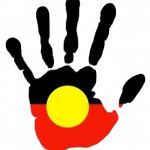The first experience your pup has with a groomer can shape the way he or she feels about grooming later in life and assisting your puppy with relaxed behaviours starts on day one.
Training for grooming and handling should be included in a pup’s early life lessons – along with socialisation and basic obedience.
Set your puppy up for a stress-free future!
Grooming and handling should be part of your puppy training routine as the processes involved can be stressful if he has not been adequately desensitised. Training should consist of short frequent sessions with plenty of praise and treats! As the attention span of most pups is not very long, training should be a slow and steady process. Putting in the groundwork now will definitely set your pup up for a confident and stress-free future.Top Tips:
- Find a quiet place away from distractions for training.
- Do not train when you are stressed or rushed, or when your puppy is a little tired or hungry.
- If you have a small dog, it will likely be groomed on a table. Training on a table (as long as your pup is used to being picked up first) can help to build confidence when it comes to grooming time. Start with performing basic commands on a table or bench top until your dog is comfortable.
- Ensure there is a non-slip mat on the table at all times. Slippery footing will almost certainly cause some anxiety.
Getting used to the grooming process
- Start by touching your pup all over with your hands in a gentle fashion – almost like a ‘pat’ session.
- Use ‘high value’ treat rewards (such as roast chicken) when introducing new things.
- Make sure that your puppy is 100% comfortable being touched with your hands before you move on to using any tools like brushes or combs.
- Once your puppy is used to being touched normally, ensure that your puppy is comfortable being touched inside their ears, around their eyes, nose, legs, feet and hygiene areas. A dog who is calm and relaxed while being handled in this way will help not only with grooming – but also with visits to the vet clinic.
- Remember to reward (frequently!) with treats. Your puppy still doesn’t understand the benefits of being groomed, so he will need some incentive!
- You should aim to brush your puppy daily, even when the coat has no knots. If he is only brushed when there is a problem, he may associate brushing with discomfort. We all know how uncomfortable brushing knotted hair is!
 Often the hair in front of the eyes will need trimming in-between visits to the grooming salon. Have a professional groomer do his for you the first few times it is required for safety and proficiency. Seeing a pair of scissors pointing towards your eyes can be pretty scary if you don’t know what is happening!
Often the hair in front of the eyes will need trimming in-between visits to the grooming salon. Have a professional groomer do his for you the first few times it is required for safety and proficiency. Seeing a pair of scissors pointing towards your eyes can be pretty scary if you don’t know what is happening!
- When your puppy is having his face groomed, the groomer gently supports the chin. Get your pup used to this by having one hand holding onto the chin, the pup sitting calmly and looking at you, then rewarding with a treat. Start with a second-long hold and then build up to 1 minute over several weeks. We teach the relevant ‘chin rest’ command during our puppy classes!
Nail clipping
It is often best to have a groomer perform this the first few times it is required. Nail clipping is a strange feeling to a puppy, but most dogs require nail trims throughout their life stages so it is important to get it right! Be gentle and avoid the nail quiks (which will bleed if cut too short!). Start with trimming one nail and then rewarding. If this is a stressful experience for your puppy at the start – go back to foot handling only, and work up to introducing the clippers again slowly.Hair Dryers
Groomers use a hairdryer, which can be loud and scary! Never chase your pet with the hairdryer or force your pup to sit through a blowdry if he is distressed – remember – working up to these scary things takes time! If you use a hairdryer yourself, you can have your pup in the room whilst you use it on yourself – distracting him with a treat (like a stuffed Kong toy or a pigs ear). If your puppy is comfortable being in the same room as the hairdryer, move the dryer closer towards the puppy without directing the flow of air towards him. If your pup appears nervous, go back to the step before – move the hairdryer away again until he is comfortable. Only once your puppy is comfortable with being next to the hairdryer would you direct the flow on to your puppy. Start with a short “wave” of the dryer over their side and then reward with a treat. Build the time your puppy is in the air from the hairdryer over time. Then build up to including the face in the stream of air. Remember:- Learning is a process, it is not something that happens overnight!
- Short regular sessions are much better than longer infrequent ones.
- Always move slowly and reward with tasty treats.
- If your puppy is getting stressed you are moving too quickly. Go back a couple of steps and work your way up again!
- Training sessions should always be marked with a ‘start’ and a ‘finish’ so your pup is aware of when he can stop concentrating (we teach these important cues in our puppy classes).
Did you know that we offer FREE face and nail trims to pups under 12 weeks of age?
This service only takes about 5 minutes and is the perfect introduction to your new baby’s first groom!




